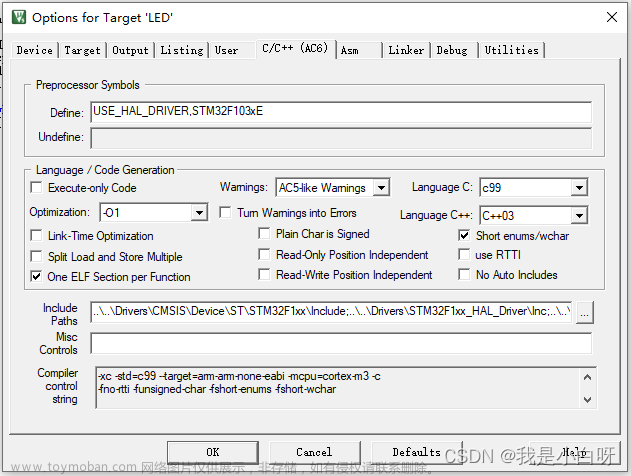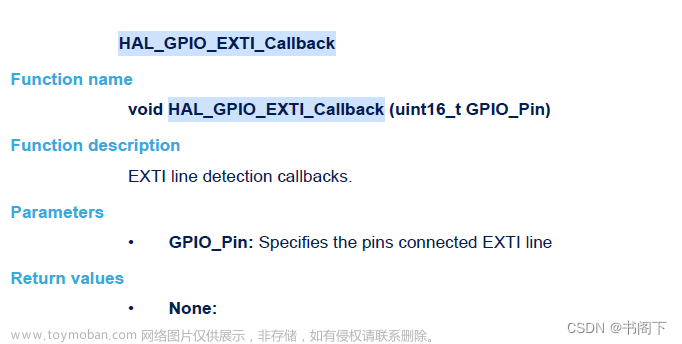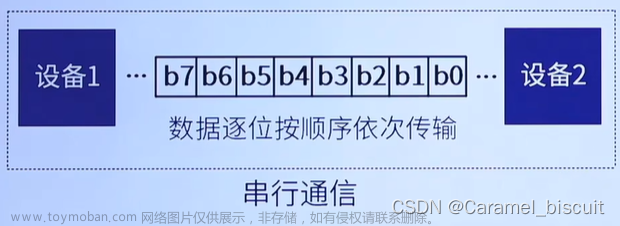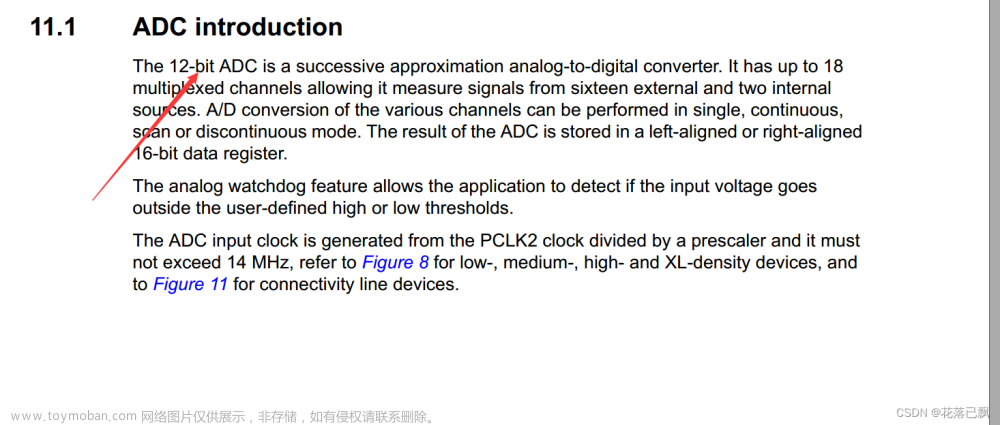STM32 CubeMX 简介
CubeMX (全称 STM32CubeMX) 是 ST 公司推出的一款用于 STM32 微控制器配置的图形化工具. 它能帮助开发者通过直观的图像界面快速完成 STM32 微控制器的硬件配置, 外设初始化以及中间件设置等工作. 通过 CubeMX, 开发者可以大幅提高开发效率, 降低开发难度, 尤其是对于刚接触 STM32 的新手.
CubeMX 的主要功能和特点如下:
- 硬件配置: 通过图形化界面, 我们可以方便地配置 STM32 微控制器的引脚, 时钟树以及电源设置等, 无需手动查阅数据手册
- 外设初始化: 支持 STM32 系列微控制器的各种外设, 包括定时器, UART, I2C, SPI 等. 我们可以通过简单的操作, 对外设进行参数设置和功能配置
- 中间件设置: 内置了 ST 公司提供的各种中间件, 如 FreeRTOS, LwIP, USB Device 等. 我们可以通过 CubeMX 轻松地为项目添加所需的中间件
- 代码生成: 根据配置的硬件和外设参数, CubeMX 可以自动生成初始化代码, 支持不同的 IDE, 如 AR, Keil, STM32CubeIDE 等. 生成的代码遵循 HAL 库标准, 方便开发者进行二次开发
- 项目管理: 可以创建, 打开和保存项目, 方便开发者对多个项目进行管理. 同时, 还指出导入已有的项目, 便于后续的项目维护和优化

安装 JAVA

查看是否安装成功:
CubeMX 安装

新建 STM32 CubeMX 工程步骤
- 工程初步建立: 新建工程, 选择芯片型号
- 时钟模块配置: 设置 HSE, LSE, MCO
- 时钟系统配置: PLL, SYSCLK, AHB, APB1, APB2 等等
- GPIO 引脚配置: 以连接在 LED 灯的 IO 为例介绍如何配置
- Cortex 内核配置: SYS (DEBUG) 配置, NVIC (优先级分组)
- 生成工程源码: 设置工程, MDK 等, 最后生成代码工程
- 编写用户程序: 在 main.c 文件预留的位置编写代码
新建工程
新建工程:
选择芯片:
时钟模块配置

配置时钟:
GPIO 配置
 文章来源:https://www.toymoban.com/news/detail-453002.html
文章来源:https://www.toymoban.com/news/detail-453002.html
生成源码
 文章来源地址https://www.toymoban.com/news/detail-453002.html
文章来源地址https://www.toymoban.com/news/detail-453002.html
main.c
/* USER CODE BEGIN Header */
/**
******************************************************************************
* @file : main.c
* @brief : Main program body
******************************************************************************
* @attention
*
* <h2><center>© Copyright (c) 2021 STMicroelectronics.
* All rights reserved.</center></h2>
*
* This software component is licensed by ST under BSD 3-Clause license,
* the "License"; You may not use this file except in compliance with the
* License. You may obtain a copy of the License at:
* opensource.org/licenses/BSD-3-Clause
*
******************************************************************************
*/
/* USER CODE END Header */
/* Includes ------------------------------------------------------------------*/
#include "main.h"
#include "gpio.h"
/* Private includes ----------------------------------------------------------*/
/* USER CODE BEGIN Includes */
/* USER CODE END Includes */
/* Private typedef -----------------------------------------------------------*/
/* USER CODE BEGIN PTD */
/* USER CODE END PTD */
/* Private define ------------------------------------------------------------*/
/* USER CODE BEGIN PD */
/* USER CODE END PD */
/* Private macro -------------------------------------------------------------*/
/* USER CODE BEGIN PM */
/* USER CODE END PM */
/* Private variables ---------------------------------------------------------*/
/* USER CODE BEGIN PV */
/* USER CODE END PV */
/* Private function prototypes -----------------------------------------------*/
void SystemClock_Config(void);
/* USER CODE BEGIN PFP */
/* USER CODE END PFP */
/* Private user code ---------------------------------------------------------*/
/* USER CODE BEGIN 0 */
/* USER CODE END 0 */
/**
* @brief The application entry point.
* @retval int
*/
int main(void)
{
/* USER CODE BEGIN 1 */
/* USER CODE END 1 */
/* MCU Configuration--------------------------------------------------------*/
/* Reset of all peripherals, Initializes the Flash interface and the Systick. */
HAL_Init();
/* USER CODE BEGIN Init */
/* USER CODE END Init */
/* Configure the system clock */
SystemClock_Config();
/* USER CODE BEGIN SysInit */
/* USER CODE END SysInit */
/* Initialize all configured peripherals */
MX_GPIO_Init();
/* USER CODE BEGIN 2 */
/* USER CODE END 2 */
/* Infinite loop */
/* USER CODE BEGIN WHILE */
while (1)
{
/* USER CODE END WHILE */
/* USER CODE BEGIN 3 */
HAL_GPIO_WritePin(LED0_GPIO_Port, LED0_Pin, GPIO_PIN_SET); /*LED0 PB5置1*/
HAL_GPIO_WritePin(LED1_GPIO_Port, LED1_Pin, GPIO_PIN_RESET);/*LED1 PE5置0*/
HAL_Delay(500);
HAL_GPIO_WritePin(LED0_GPIO_Port, LED0_Pin, GPIO_PIN_RESET);/*LED0 PB5置1*/
HAL_GPIO_WritePin(LED1_GPIO_Port, LED1_Pin, GPIO_PIN_SET); /*LED1 PE5置0*/
HAL_Delay(500);
}
/* USER CODE END 3 */
}
/**
* @brief System Clock Configuration
* @retval None
*/
void SystemClock_Config(void)
{
RCC_OscInitTypeDef RCC_OscInitStruct = {0};
RCC_ClkInitTypeDef RCC_ClkInitStruct = {0};
/** Initializes the RCC Oscillators according to the specified parameters
* in the RCC_OscInitTypeDef structure.
*/
RCC_OscInitStruct.OscillatorType = RCC_OSCILLATORTYPE_HSE;
RCC_OscInitStruct.HSEState = RCC_HSE_ON;
RCC_OscInitStruct.HSEPredivValue = RCC_HSE_PREDIV_DIV1;
RCC_OscInitStruct.HSIState = RCC_HSI_ON;
RCC_OscInitStruct.PLL.PLLState = RCC_PLL_ON;
RCC_OscInitStruct.PLL.PLLSource = RCC_PLLSOURCE_HSE;
RCC_OscInitStruct.PLL.PLLMUL = RCC_PLL_MUL9;
if (HAL_RCC_OscConfig(&RCC_OscInitStruct) != HAL_OK)
{
Error_Handler();
}
/** Initializes the CPU, AHB and APB buses clocks
*/
RCC_ClkInitStruct.ClockType = RCC_CLOCKTYPE_HCLK|RCC_CLOCKTYPE_SYSCLK
|RCC_CLOCKTYPE_PCLK1|RCC_CLOCKTYPE_PCLK2;
RCC_ClkInitStruct.SYSCLKSource = RCC_SYSCLKSOURCE_PLLCLK;
RCC_ClkInitStruct.AHBCLKDivider = RCC_SYSCLK_DIV1;
RCC_ClkInitStruct.APB1CLKDivider = RCC_HCLK_DIV2;
RCC_ClkInitStruct.APB2CLKDivider = RCC_HCLK_DIV1;
if (HAL_RCC_ClockConfig(&RCC_ClkInitStruct, FLASH_LATENCY_2) != HAL_OK)
{
Error_Handler();
}
}
/* USER CODE BEGIN 4 */
/* USER CODE END 4 */
/**
* @brief This function is executed in case of error occurrence.
* @retval None
*/
void Error_Handler(void)
{
/* USER CODE BEGIN Error_Handler_Debug */
/* User can add his own implementation to report the HAL error return state */
/* USER CODE END Error_Handler_Debug */
}
#ifdef USE_FULL_ASSERT
/**
* @brief Reports the name of the source file and the source line number
* where the assert_param error has occurred.
* @param file: pointer to the source file name
* @param line: assert_param error line source number
* @retval None
*/
void assert_failed(uint8_t *file, uint32_t line)
{
/* USER CODE BEGIN 6 */
/* User can add his own implementation to report the file name and line number,
tex: printf("Wrong parameters value: file %s on line %d\r\n", file, line) */
/* USER CODE END 6 */
}
#endif /* USE_FULL_ASSERT */
到了这里,关于【STM32】基础知识 第十课 CubeMx的文章就介绍完了。如果您还想了解更多内容,请在右上角搜索TOY模板网以前的文章或继续浏览下面的相关文章,希望大家以后多多支持TOY模板网!














